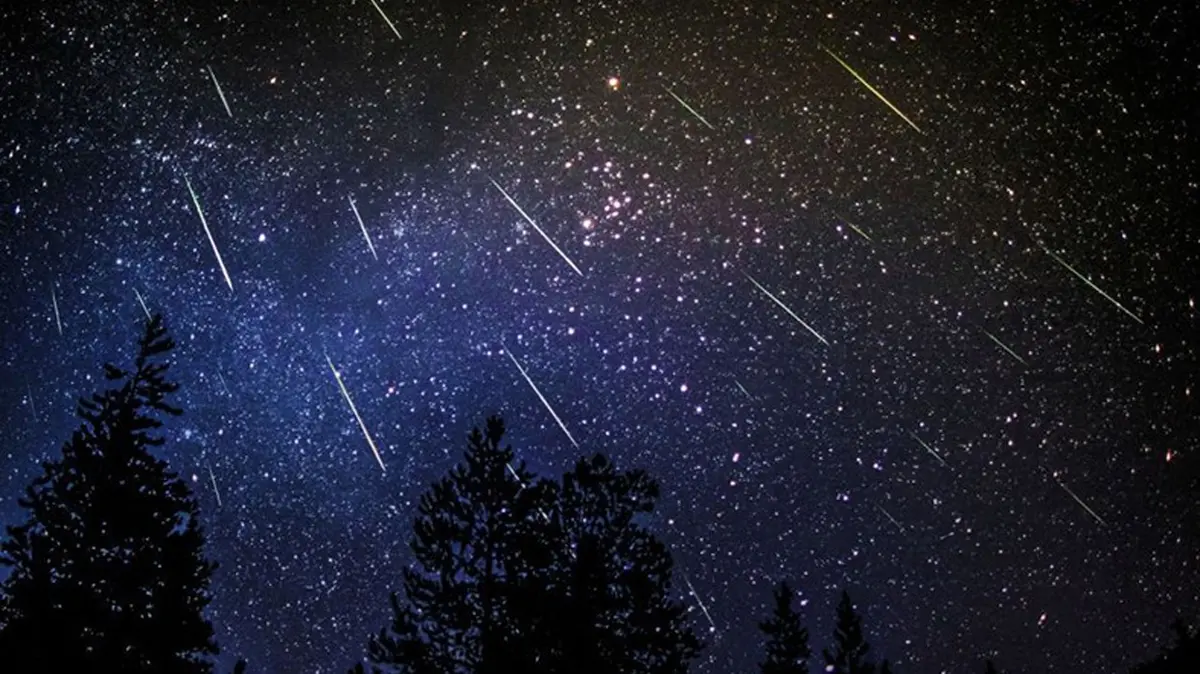What is a Meteor Shower?
A meteor shower is a celestial event where a number of meteors are observed to radiate from one point in the night sky. These meteors are caused by streams of cosmic debris called meteoroids entering Earth’s atmosphere at extremely high speeds, resulting in streaks of light.
Meteors, commonly known as shooting stars, are the brief flashes of light we see in the sky. They are created when a meteoroid, a fragment of dust or debris from a comet or asteroid, burns up as it passes through Earth’s atmosphere. Most meteors are tiny, about the size of a grain of sand or pebble.
When is the Next Meteor Shower?
The next major meteor shower is the Lyrids, which will peak in the early morning hours of April 22-23, 2023. The Lyrids typically produce around 10-20 meteors per hour at their peak, though rates can vary greatly from year to year.
Following the Lyrids, the Eta Aquarids will peak on May 6, 2023, with the best viewing occurring before dawn. This shower produces around 20-30 meteors per hour on average during its peak.
One of the most anticipated meteor showers of the year is the Perseids, which will reach its maximum on the night of August 12-13, 2023. The Perseids are known for producing a high number of bright meteors, often around 60 per hour at their peak.
Popular Meteor Showers
Some of the most famous and spectacular annual meteor showers include the Perseids, Geminids, and Leonids. These celestial events occur when the Earth passes through streams of debris left behind by comets, resulting in dazzling displays of shooting stars in the night sky.
The Geminids are a relatively young meteor shower, first observed in the 1800s. They peak in mid-December and are unique among major showers as they originate from an asteroid, rather than a comet.
How to View a Meteor Shower
To get the best meteor shower viewing experience, there are several tips and factors to consider:
Find a Dark Location
Light pollution from cities and towns can significantly diminish the visibility of meteors. Seek out areas away from bright lights, such as remote parks, deserts, or rural areas with minimal artificial lighting. The darker the sky, the more meteors you’ll be able to see.
Check the Weather Conditions
Clear, cloudless skies are essential for optimal meteor shower viewing. Even thin clouds can obscure the view of meteors streaking across the sky. Check weather forecasts and pick a night with minimal cloud cover for the best chance of seeing the celestial show.
Get Away from Obstructions
Buildings, trees, and other obstacles can block your view of the night sky. Find an open area with an unobstructed view of the horizon, such as a wide field or hilltop. This will maximize your chances of catching meteors from all directions.
Meteor Shower Photography
Photographing a meteor shower can be a rewarding and exciting experience, capturing the fleeting beauty of these celestial events. To increase your chances of success, it’s essential to understand the techniques, camera settings, and equipment required for meteor shower photography.
Camera Settings
One of the most crucial aspects of meteor shower photography is choosing the right camera settings. Since meteors move quickly across the sky, you’ll need to use a long exposure time to capture their trails. Additionally, set your camera to a high ISO (800-3200) to compensate for the low light conditions.
Wide-Angle Lenses
Meteor showers are best captured with a wide-angle lens, which allows you to capture a larger portion of the sky. A focal length of 14-24mm is ideal, as it provides a wide field of view while minimizing distortion. Additionally, wide-angle lenses often have a large aperture (f/2.8 or wider), which is essential for gathering as much light as possible during long exposures.
Tripods and Remote Shutters
To achieve sharp images during long exposures, you’ll need a sturdy tripod to keep your camera stable. Invest in a quality tripod that can support the weight of your camera and lens. Additionally, consider using a remote shutter release or the camera’s built-in self-timer to avoid introducing camera shake when pressing the shutter button.
Composition and Framing
When composing your shots, consider including interesting foreground elements, such as trees, buildings, or landscapes, to add depth and interest to your images. Frame your shots carefully, ensuring that the meteor shower is the main subject and that any foreground elements complement the scene rather than distract from it.
Editing and Post-Processing
Post-processing is an essential step in meteor shower photography. You may need to adjust exposure, contrast, and color balance to enhance the visibility of the meteor trails. Additionally, consider stacking multiple exposures to create a composite image that showcases the full extent of the meteor shower.
Remember, meteor shower photography requires patience, persistence, and a bit of luck.
Meteor Shower Safety
Meteor showers are a breathtaking celestial phenomenon, but it’s important to take certain precautions to ensure a safe and enjoyable viewing experience. While the risks are relatively low, being aware of potential hazards can help you avoid any unpleasant situations.
Darkness Hazards: Meteor showers are best viewed in areas with minimal light pollution, which often means venturing into remote or rural locations. Be cautious of uneven terrain, obstacles, and potential wildlife encounters when walking or setting up in dark areas.
Weather Conditions: Check the weather forecast beforehand and dress appropriately for the conditions. Bring warm clothing, rain gear, and proper footwear to stay comfortable and dry during your viewing session.
Eye Safety: Avoid looking directly at bright meteors or fireballs, as they can temporarily impair your night vision or cause afterimages. Give your eyes frequent breaks to prevent strain and fatigue.
Driving Precautions: If you plan to drive to a viewing location, be aware of increased pedestrian traffic and people stopped along roadsides. Drive cautiously, obey traffic laws, and park in designated areas.
Origins and Science of Meteor Showers
Meteor showers are celestial events that occur when the Earth passes through the debris stream left behind by a comet or, in some cases, an asteroid. These debris streams consist of dust, rocks, and other particles released from the comet or asteroid as it orbits the Sun.
As the Earth moves through this stream of debris, the particles collide with our planet’s atmosphere at incredibly high speeds, ranging from 25,000 to 160,000 miles per hour. The friction caused by these collisions causes the particles to burn up, creating the streaks of light we see in the night sky – the meteors.
Historical Meteor Shower Events
Throughout history, meteor showers have captivated observers and left lasting impressions on cultures around the world. These celestial events have been interpreted as divine signs, omens, and even harbingers of significant events. Some of the most notable meteor showers in history include:
The Leonid Meteor Storm of 1833: One of the most intense meteor showers ever recorded, the 1833 Leonid meteor storm produced an estimated 240,000 meteors per hour at its peak. This event was witnessed across much of the eastern United States and caused widespread awe and fear among those who observed it. Many believed it to be a sign of the apocalypse or a divine omen.
The Perseid Meteor Shower of 1863: During the American Civil War, Union and Confederate soldiers alike witnessed a spectacular display of the annual Perseid meteor shower. Some soldiers interpreted the meteors as a sign of divine intervention or a harbinger of the war’s outcome.
The Leonid Meteor Storm of 1966: Another intense Leonid meteor storm occurred in 1966, with rates reaching an estimated 144,000 meteors per hour. This event was widely observed and studied by astronomers, providing valuable data on the nature of meteor showers and their parent comets.
Meteor Shower Myths and Legends
Across cultures and civilizations, meteor showers have captivated the human imagination, inspiring myths, folklore, and legends that attempt to explain these celestial wonders.
The Inca civilization of South America saw the Eta Aquarid meteor shower as a celebration of the annual return of their gods, who they believed arrived on Earth during this event.
Future of Meteor Shower Observation
Advancements in technology and scientific research are paving the way for more accurate meteor shower predictions and enhanced observation experiences. Astronomers are developing sophisticated computer models that can precisely calculate the paths of comets and the debris streams they leave behind, allowing for better forecasting of meteor shower peaks and intensities.
Additionally, the deployment of advanced ground-based and space-based observatories equipped with high-resolution cameras and specialized sensors is revolutionizing the way we study and observe meteor showers. These cutting-edge instruments can capture intricate details of meteors, providing valuable insights into their composition, speed, and trajectories.

